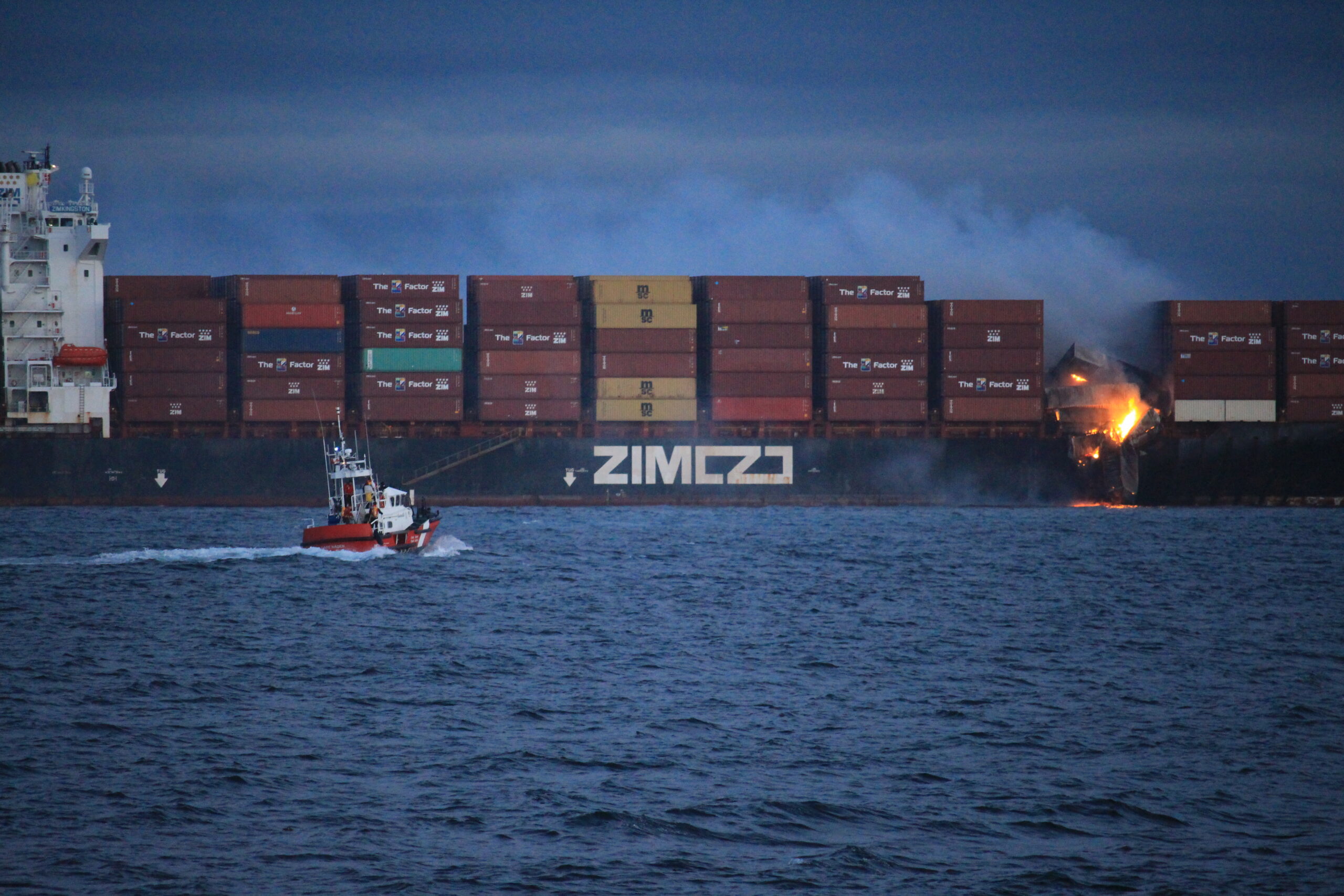By Yoan Marier*

The consequences of a marine accident are not just felt in the moment that the disaster strikes or the harrowing ones that quickly follow. They are also felt in the next days, months, years, and, sometimes, decades.
We have seen this in the case of the loss of containers overboard and fire on the container vessel ZIM Kingston, whose consequences are long-lasting and far-reaching. Three years later, we’re still unable to predict the long-term effects that this and other such occurrences will continue to have on Canadian waters and coastlines.
On October 21, 2021, while waiting for an anchorage to become available, the ZIM Kingston was drifting outside the Juan de Fuca Strait when it encountered strong gale force winds and five to six metre waves. This led to a series of severe side-to-side rolls, resulting in the loss of 109 containers overboard and damage to others. Approximately 36 hours later, while the vessel was anchored off Victoria, British Columbia, a fire broke out in a damaged container that held dangerous goods. The fire then spread to nearby containers and lasted for five days before it was declared extinguished.
To this day, of the 1490 tonnes lost overboard, only around 48 were recovered during short-term clean-up efforts, leaving 97% of the debris in our waters or washed up on coastlines.
The Transportation Safety Board of Canada investigated this occurrence to find out what happened and why. We recently released our investigation report (M21P0297) that underscores the challenges of dealing with marine emergencies.
Absence of guidance on parametric rolling
Model testing conducted during our investigation confirmed that the ZIM Kingston experienced parametric rolling. Difficult to predict, this complex phenomenon develops when sea conditions combine or interact with other factors, many of which are vessel-specific, e.g., its stability, speed, hull form, and length, in a precise way and generate sudden dangerous rolling motions.
Our investigation found that the risk of parametric rolling could have been identified using guidance material that is generally available to the industry. However, it was not on board the ZIM Kingston at the time of the occurrence. Furthermore, our investigation also revealed inconsistencies and inadequacies with respect to bridge crew training and the procedures and tools to support them in managing the risk of parametric rolling.
The International Maritime Organization is taking steps to update industry guidance for the management of parametric rolling, but this will take time. In the interim, the Board is concerned that the absence of up-to-date comprehensive industry guidance for the management of PR may cause company policies, procedures, tools, and training to be inconsistent, ineffective, or absent altogether, which could lead to more container loss occurrences, along with their associated negative outcomes for safety and the environment.
The ZIM Kingston occurrence is one of many examples highlighting the gaps in Canada’s preparedness to respond to marine emergencies, including the availability of resources to respond to vessel fires and incidents involving hazardous and noxious substances.
After the fire broke out on the vessel, the crew responded with all the equipment they had available to them. However, the fire exceeded their capacity to respond, and outside assistance was required. The emergency response that ensued was initiated mainly due to incidental, but fortunate, circumstances. Unlike the United States, Canada does not require pre-arranged plans for emergency response or marine salvage. In addition, the Canadian Coast Guard does not directly participate in marine fire response, nor does it have fire suppression capabilities to directly respond to a vessel fire. In this occurrence, it was fortunate that the vessel’s manager had made arrangements for emergency response to comply with United States legislation and that, only by happenstance, there were two suitably equipped vessels with firefighting capacity nearby.
Fortunately, the federal government recognizes the need to improve preparedness for hazardous and noxious substances occurrences and intends to implement a single national system to respond to all marine pollution incidents by 2027. Transport Canada is also taking action by developing regulations to require emergency response arrangements, although they estimate that the regulations will not be in place before 2028.
While these steps forward are encouraging, we know from past experience this will take time, and could take longer than anticipated. For this reason, the Board is concerned that there are gaps in Canada’s preparedness for marine emergencies that exceed the response capacity of a vessel’s crew, posing a risk to vessels, the environment, and the health and safety of the general public.
The call to action
This occurrence not only emphasizes the risks present in modern shipping but also raises urgent questions about emergency preparedness. The consequences of such occurrences can endanger vessels and their crews, harm the environment, and affect the health and safety of both Canadians and those beyond our borders.
The unfortunate reality is that this is not the first and certainly not the last incident of its kind. The question is: will Canada be ready before the next disaster occurs?
(Photo from Canadian Coast Guard of ZIM Kingston burning)
* Yoan Marier is the Chair of the Transportation Safety Board of Canada and has many years of experience in the field of federally regulated transportation and regulatory compliance.


